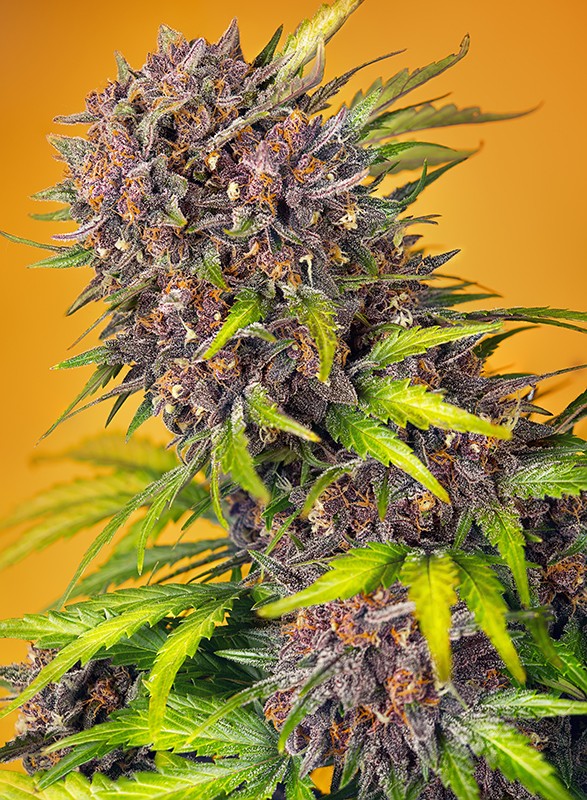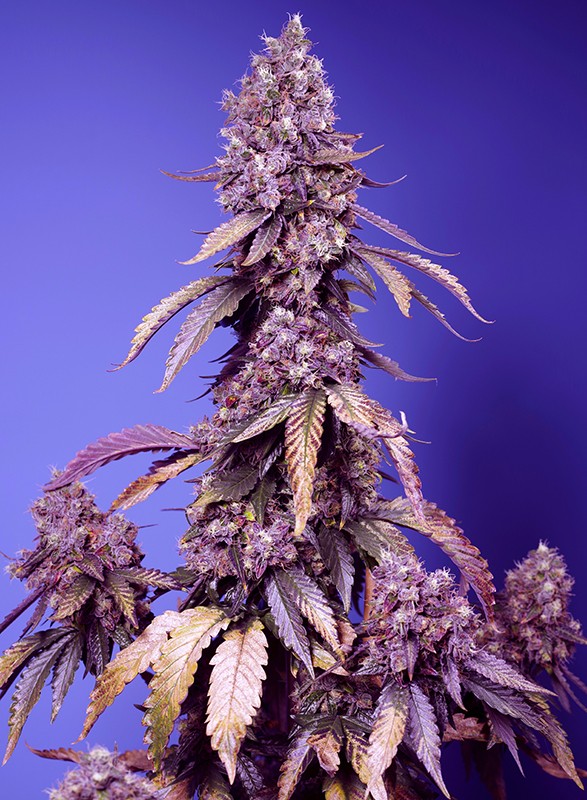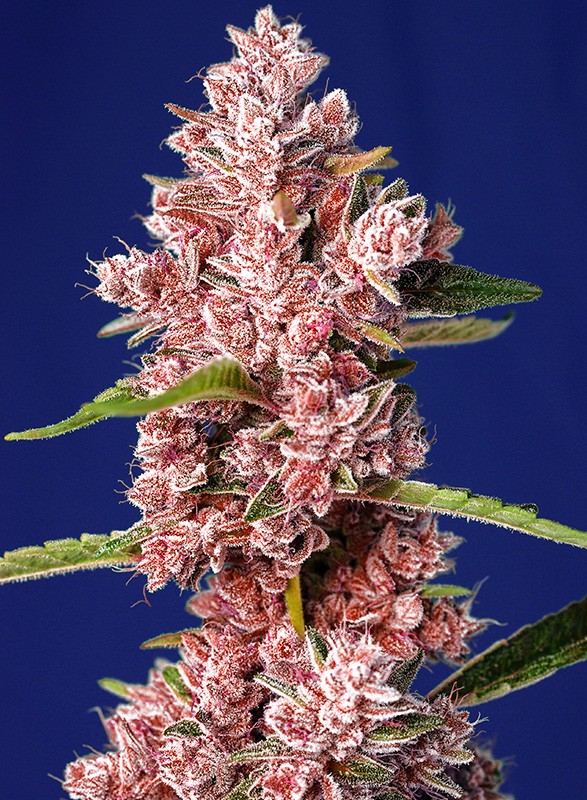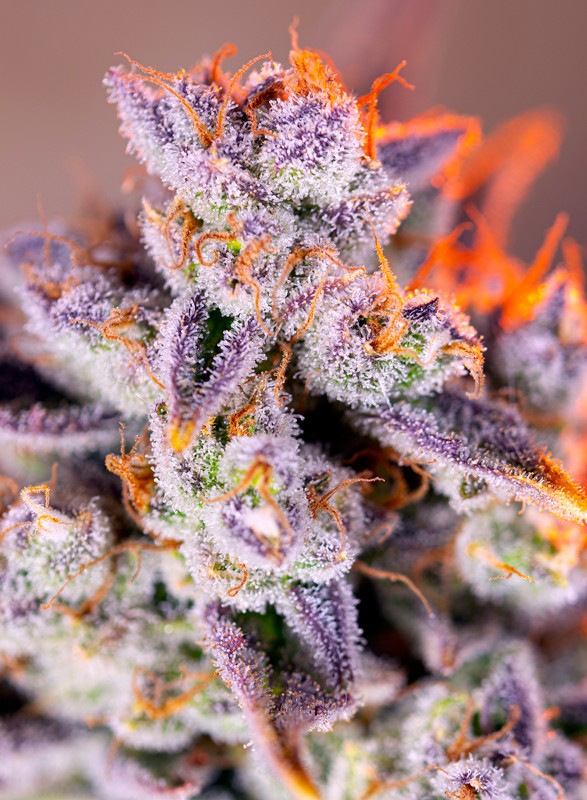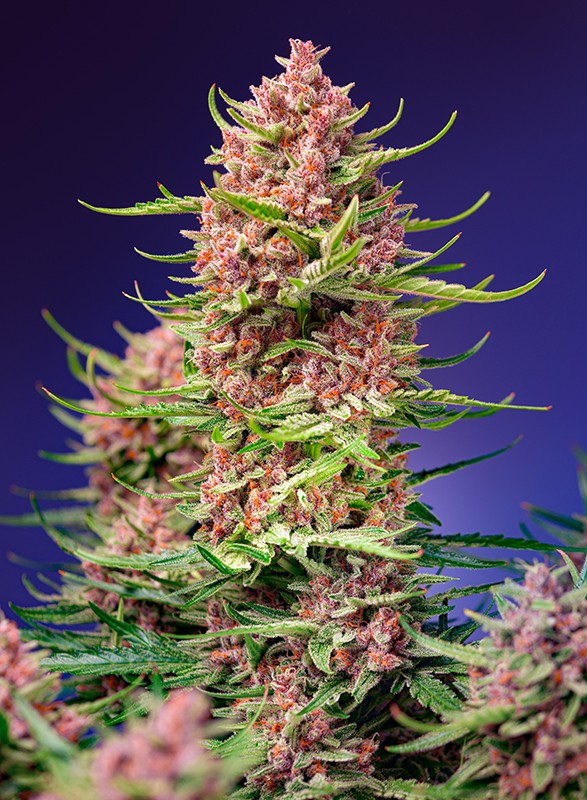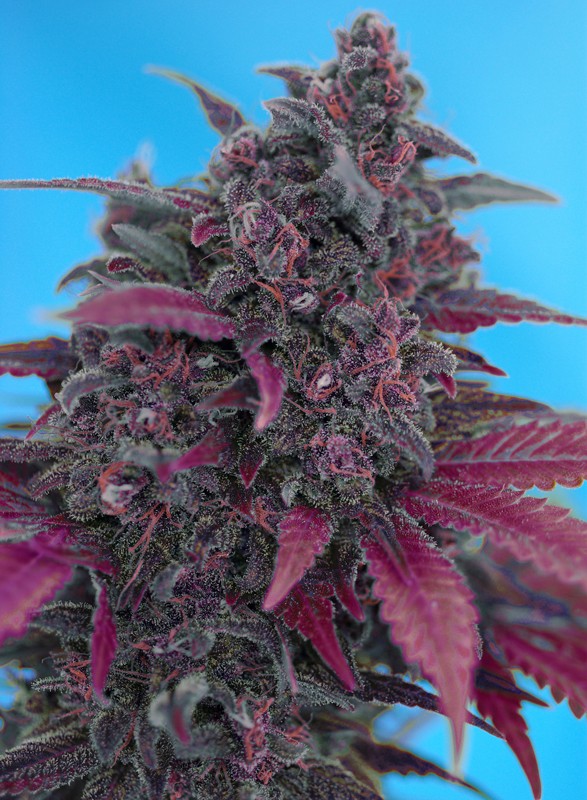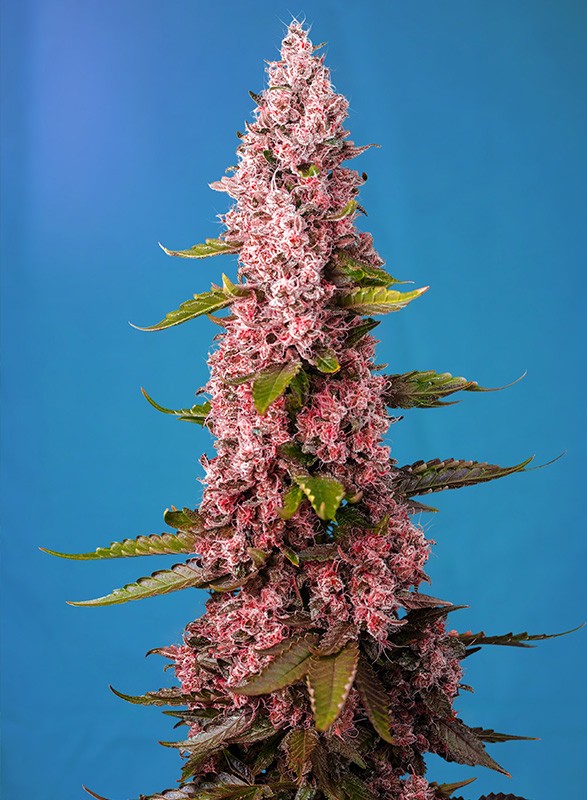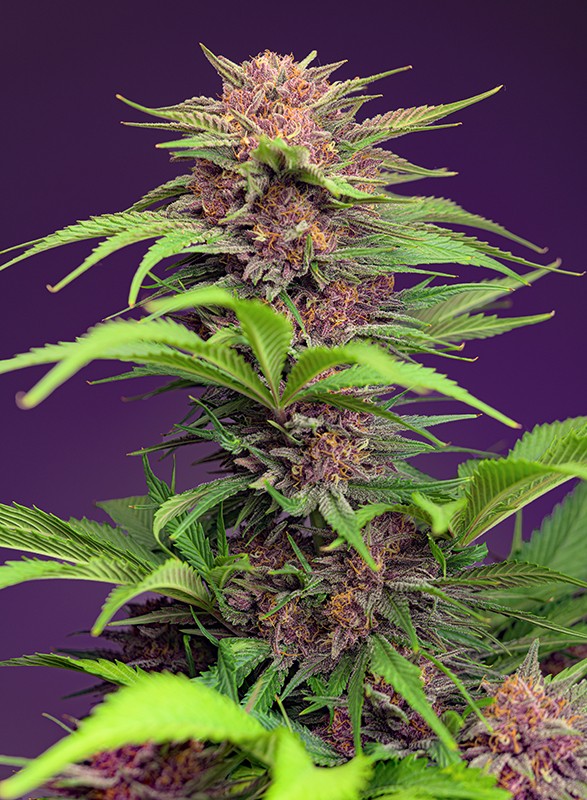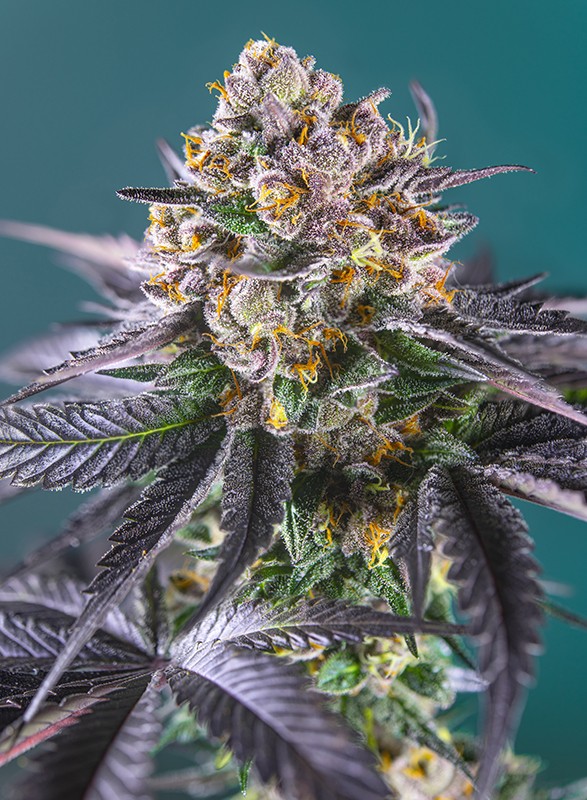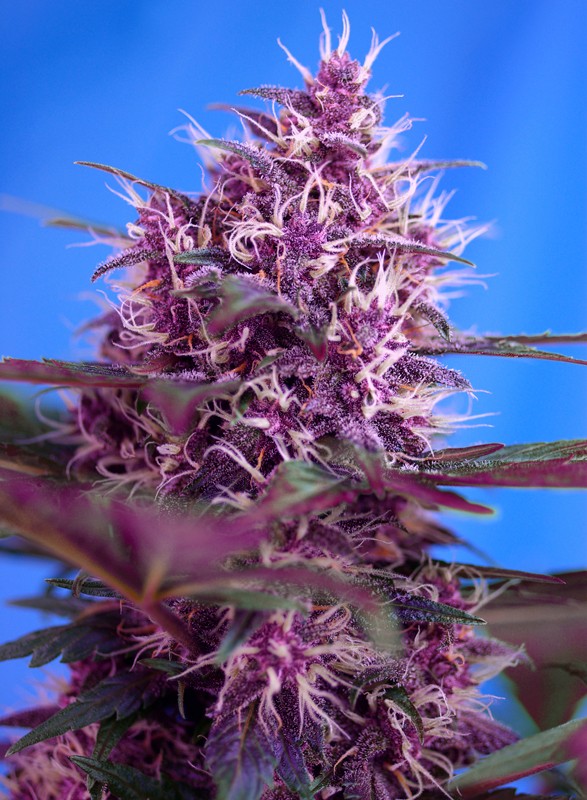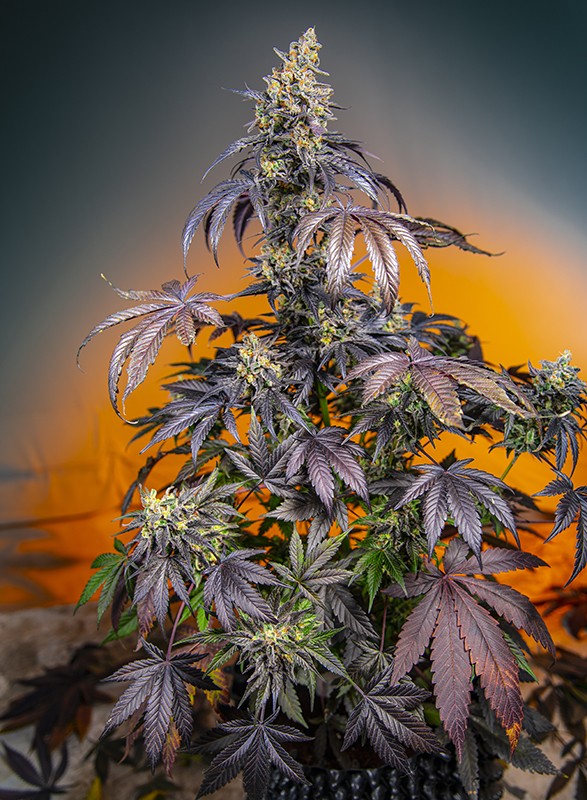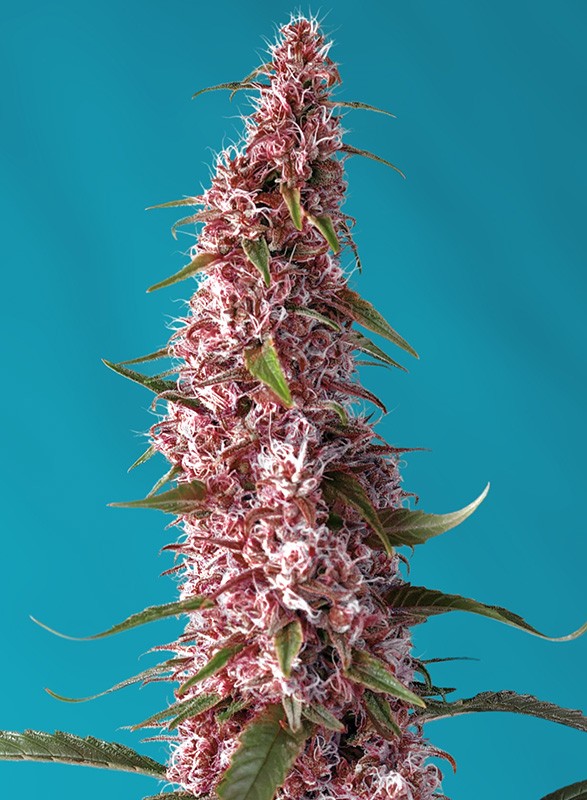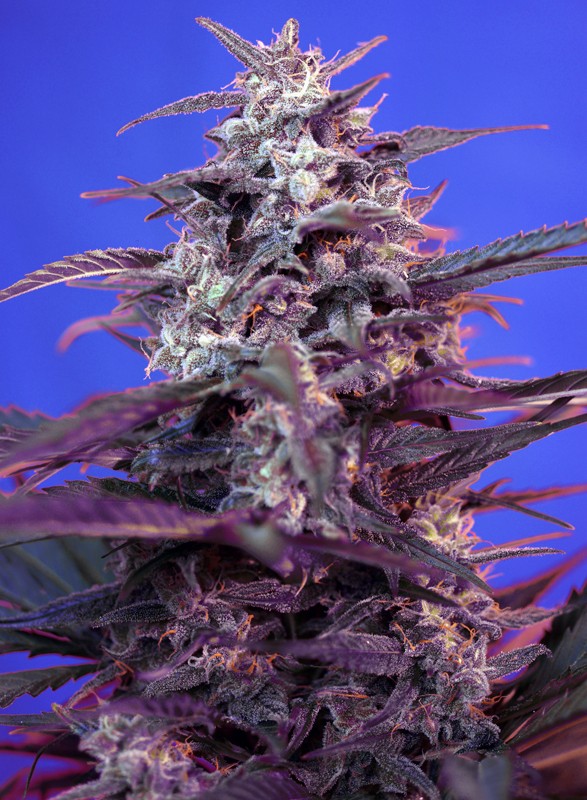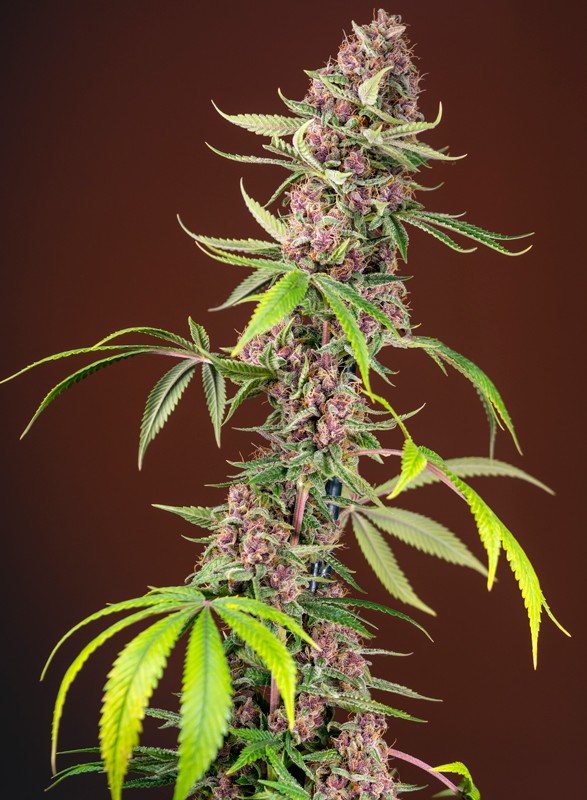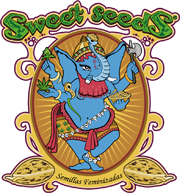Most cannabis buds are green—some more vibrant, others leaning towards yellowish hues. However, The Red Family strains break away from the norm, adopting reddish, purple, violet, or bluish tones. The adjectives "red," "purple," and "blue" spark the curiosity of growers, but the colors in the cannabis plant are not just about aesthetic beauty. They are the expression of a unique group of molecules: anthocyanins. These are also responsible for the pigmentation of many dark fruits and much of the autumnal hues seen in nature.
The purple or violet coloration seen in The Red Family seeds during flowering is due to its high anthocyanin content (from the Greek anthos, flower + kyáneos, blue). These are water-soluble pigments present in plant cells, which produce red, purple, or blue shades in the leaves, flowers, and stems of cannabis plants.
There are hundreds of different anthocyanins, each creating a wide range of colors. For example, malvidin produces purple, flavones generate yellow, delphinidin results in blue, cyanidin gives violet, and pelargonidin creates red and orange. The combination of various anthocyanins in the same tissue, at different concentrations, generates a wide spectrum of intensities, tones, and shades.
Anthocyanins have been found in all tissues of plants, including leaves, stems, roots, flowers, and fruits. In cannabis, they have not been discovered in the roots and are rare in seeds, but in the leaves, stems, and flowers, they can account for up to 2.5% of the plant's dry weight.
It is possible to extract purple and pink resins from the buds of red cannabis. The anthocyanins responsible for the red coloration of the buds are also present within the resin glands (trichomes), resulting in uniquely beautiful extractions.
Dark-colored fruits and vegetables like plums, blackberries, grapes, blueberries, cherries, eggplants, and red cabbage are rich in anthocyanins.
Anthocyanins belong to the flavonoid group (from Latin flavus, yellow), which are secondary metabolites of plants.
There are four classes of flavonoids: flavonoids, isoflavonoids, neoflavonoids, and anthocyanins.
Depending on the species, flavonoids perform various functions in plants, such as:
- Protecting tissues from damage caused by ultraviolet radiation.
- Producing bitter flavors to deter herbivores from feeding on the plant.
- Releasing pleasant aromas to attract seed-dispersing herbivores and encourage them to consume the fruits.
- Attracting pollinating insects.
- Regulating the transport of the hormone auxin.
- Defending against attacks by certain fungi.
Not all non-green colors seen in cannabis are due to anthocyanins. In strains that do not produce purple, blue, or red hues, we often see that golden, orange, or yellow tones appear at the end of flowering. These are caused by carotenoids. Carotenoids are pigments naturally present in plant tissues which are typically hidden by the intense green coloration of chlorophyll. When a leaf loses its chlorophyll, it appears yellow because the carotenoids, which were already there, become visible.
With anthocyanins, the process seems different. The plant primarily produces these pigments toward the end of its life. This happens during the final stages of flowering when the days are shortening. At this stage in the cannabis plant's life cycle, chlorophyll production decreases, and the plant channels all its energy into flower and seed production. Meanwhile, anthocyanin production increases. As chlorophyll fades from the plant’s tissues, anthocyanins and other pigments become more visible. It is possible that anthocyanins help the plant cope better with aging, resist damage caused by ultraviolet radiation, and deter herbivores while the seeds mature.











